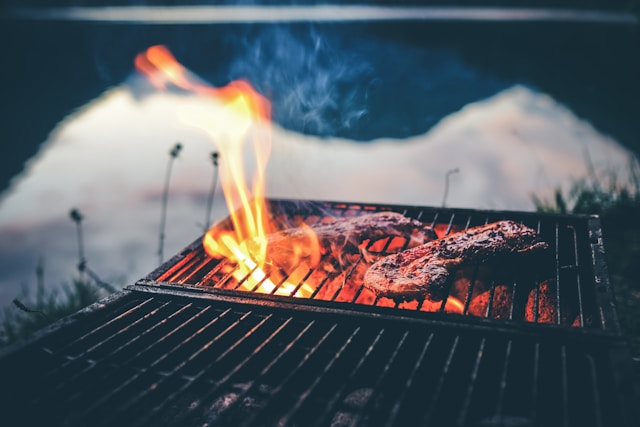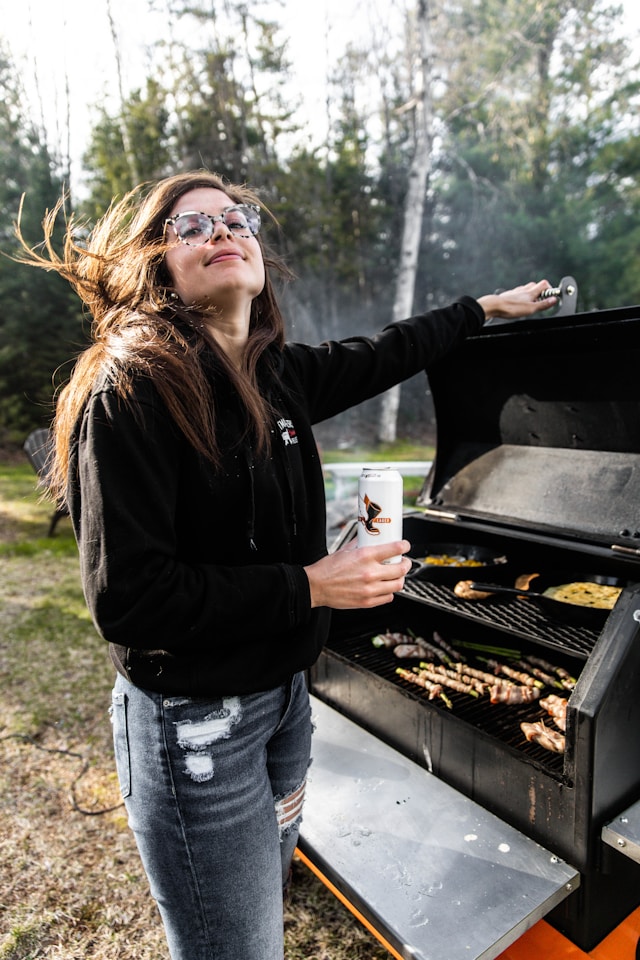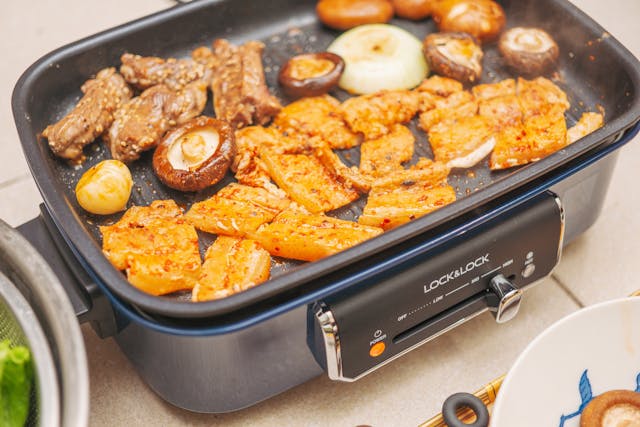Offset smoker vs charcoal grill
When it comes to outdoor cooking, the debate between offset smokers and charcoal grills often sparks passionate discussions among barbecue enthusiasts. Each has its own unique characteristics and advantages, catering to different cooking styles and flavor profiles. Offset smokers are designed specifically for low-and-slow cooking, allowing you to infuse meats with deep, smoky flavors over extended periods. In contrast, charcoal grills offer versatility and quicker cooking times, making them ideal for searing steaks, grilling vegetables, and preparing meals in a shorter time frame. Understanding these differences can help you choose the right equipment for your culinary needs and preferences.

What is an offset smoker?
An offset smoker is a type of barbecue that produces a controlled, smokey ambiance while cooking food at a low temperature. The primary cooking chamber and the firebox compartment make up the smoker’s two sections. A long, metal box with porcelain-coated cooking grates and a lift door integrated with a chimney makes up the primary cooking section. Because the firebox compartment is mounted to the side of the main compartment, adding woodchucks or charcoal while cooking is simple. You may prepare food for huge gatherings and parties because most offset smokers are massive. An offset smoker is ideal for grilling and smoking a sizable quantity of juicy meats at once if you want smoked meats.
Key Features of Offset Smokers
Construction and Materials:
Most offset smokers are made from heavy-duty steel, which provides excellent heat retention and durability. Look for thicker models that can maintain temperatures over long cooking periods.
Temperature Control:
Offset smokers typically come with adjustable air vents and dampers, allowing you to control airflow and, consequently, the temperature inside the cooking chamber. This feature is vital for achieving and maintaining your desired cooking temperature.
Cooking Capacity:
Many offset smokers offer ample cooking space, making them suitable for large cuts of meat, such as briskets and pork shoulders, as well as multiple racks of ribs or whole chickens.
Wood Selection:
Using different types of wood for smoking can enhance flavor. Popular choices include hickory, mesquite, and fruit woods like apple or cherry, each imparting a distinct taste to your food.
Benefits of Using an Offset Smoker
Flavor:
The indirect heat and smoke generated by burning wood create a depth of flavor that is hard to replicate with other cooking methods. The ability to experiment with different wood types allows for a wide range of flavor profiles.
Versatility:
While designed for smoking, offset smokers can also be used for grilling and roasting, providing versatility for various cooking styles. This adaptability makes them an excellent investment for outdoor cooking enthusiasts.
Community and Tradition:
Using an offset smoker connects you to a long-standing barbecue tradition. Engaging with fellow barbecue lovers can lead to a wealth of knowledge, tips, and shared experiences.
Best Practices for Using an Offset Smoker
Seasoning Your Smoker:
Before using your new offset smoker, season it by heating it with wood or charcoal for several hours. This process helps remove any factory oils and prepares the smoker for cooking.
Temperature Management:
Aim to maintain a consistent cooking temperature, typically between 225°F and 250°F. Invest in a reliable thermometer to monitor both the smoker’s internal temperature and the meat’s temperature.
Water Pan:
Placing a water pan inside the cooking chamber can help regulate temperature and add moisture, preventing your meat from drying out during the smoking process.
Don’t Rush:
Smoking is an art that requires patience. Allow your meat plenty of time to cook low and slow for the best results. Resist the urge to frequently open the smoker, as this can lead to temperature drops.
Experiment:
Don’t be afraid to experiment with different wood types, marinades, and rubs. Each smoking session is an opportunity to refine your technique and discover new flavors.
What is a Charcoal Grill?
A charcoal grill is a cooking device that uses charcoal briquettes or lump charcoal as its heat source. Unlike gas grills, which provide a quick and convenient cooking method, charcoal grills require a bit more preparation and attention. The result, however, is a smoky flavor and a charred crust that many grill enthusiasts prize. Charcoal grills come in various styles, including kettle grills, barrel grills, and ceramic models like the Big Green Egg.
Key Features of Charcoal Grills
Construction:
Charcoal grills are typically made from materials like steel, cast iron, or ceramic. The design often includes a lid to trap heat and smoke, allowing for indirect cooking and roasting.
Heat Control:
Many charcoal grills come with adjustable air vents, which help regulate airflow and control the grill’s temperature. This feature is crucial for achieving both high-heat grilling and low-and-slow cooking.
Cooking Surface:
Charcoal grills can vary in size and cooking surface area, accommodating everything from small family meals to larger gatherings. Consider your cooking needs when choosing a grill size.
Portability:
Many charcoal grills are lightweight and portable, making them perfect for camping trips, tailgating, or backyard barbecues.
Benefits of Using a Charcoal Grill
Flavor:
One of the primary advantages of charcoal grilling is the unique flavor it imparts. The smoke from the burning charcoal adds a rich, smoky taste that enhances meats, vegetables, and even fruits.
Versatility:
Charcoal grills can handle a variety of cooking techniques, from direct grilling to indirect cooking and even smoking. This versatility allows you to experiment with different foods and cooking styles.
Affordability:
Charcoal grills are often more affordable than gas grills, making them accessible for many outdoor cooking enthusiasts. Additionally, charcoal is typically less expensive than propane.
Community and Tradition:
Grilling with charcoal is steeped in tradition and often brings people together. Whether it’s a summer cookout or a tailgate party, charcoal grilling fosters community and connection.
Best Practices for Charcoal Grilling
Lighting the Charcoal:
Use a chimney starter to light your charcoal for an even burn. This method avoids lighter fluid, which can impart undesirable flavors to your food.
Temperature Control:
Achieving the right temperature is key to successful grilling. Use the vents to adjust airflow; opening them increases the temperature, while closing them lowers it. Aim for around 350°F to 450°F for most grilling tasks.
Direct vs. Indirect Heat:
For quick-cooking foods like burgers and steaks, use direct heat by placing the food directly over the coals. For larger cuts, such as roasts or whole chickens, utilize indirect heat by moving the coals to one side and placing the food on the opposite side.
Frequently Asked Questions
Can you use an offset smoker as a charcoal grill?
Flexibility: Offset smokers work well with a variety of meat cuts and can also be used as charcoal barbecues. Practical Experience: Cooking is a satisfying activity when you keep an eye on the temperature, adjust the vents, and tend to the fire.
Which is healthier: grilling or smoking?
Food that has been smoked maintains more of its vital vitamins and minerals than food cooked at high temperatures, which can cause nutritional loss. Foods break down gradually under the moderate, indirect heat, maintaining their nutritional value and producing dishes that are as tasty as they are healthful.
Do I want a grill or a smoker?
While smokers are used for even lower temperatures and longer times, and are what most people mean when they say "Low and slow," barbecues are wonderful for items like bone-in chicken and ribs, when you want a perfectly cooked outside but also want to keep suppleness inside. These work best with big
CONCLUSION
When choosing between an offset smoker and a charcoal grill, both options offer unique benefits that cater to different cooking styles and flavor preferences. Offset smokers excel in producing rich, smoky flavors through their indirect cooking method, making them ideal for low-and-slow barbecue techniques. They provide a traditional smoking experience that many enthusiasts cherish, perfect for large cuts of meat and gatherings.
On the other hand, charcoal grills offer versatility and quick cooking times, allowing for everything from high-heat searing to indirect roasting. The distinct flavor imparted by charcoal is hard to replicate, making it a favorite for many grillers. Ultimately, the choice between an offset smoker and a charcoal grill depends on your culinary goals, whether you’re looking for the deep, complex flavors of smoked meats or the convenience and adaptability of charcoal grilling. Whichever you choose, both methods can elevate your outdoor cooking and create memorable meals.







